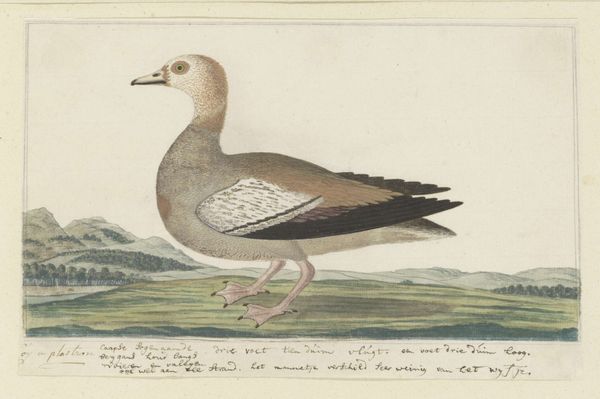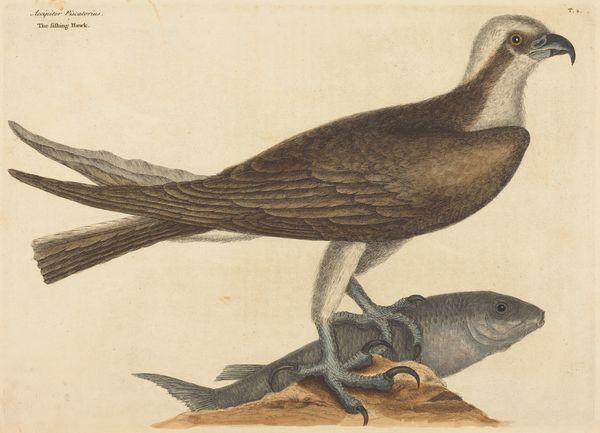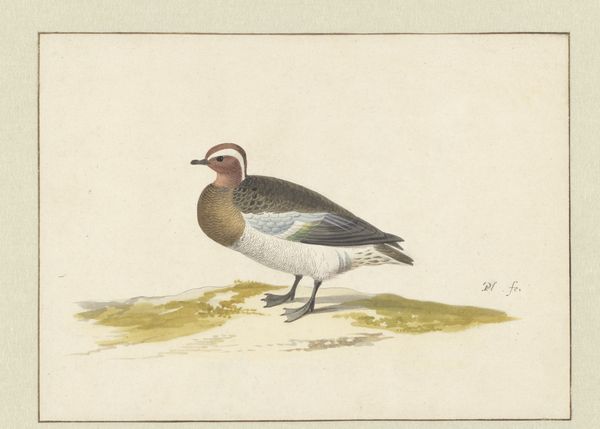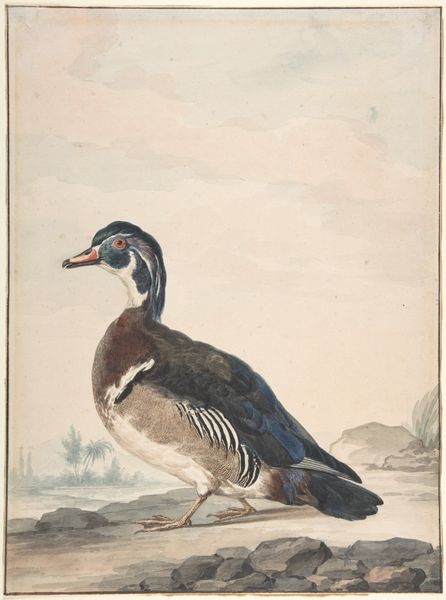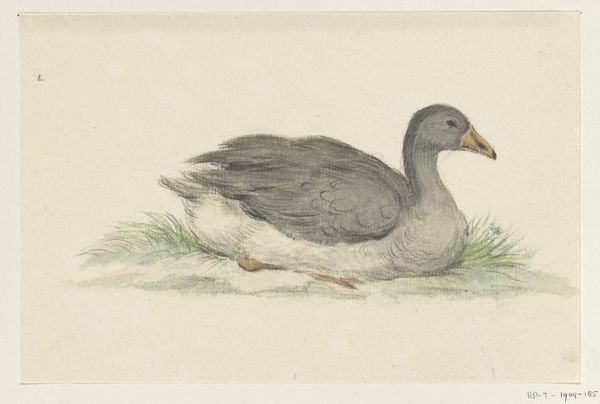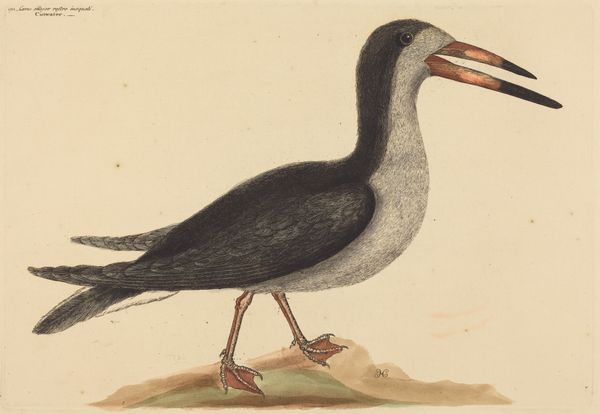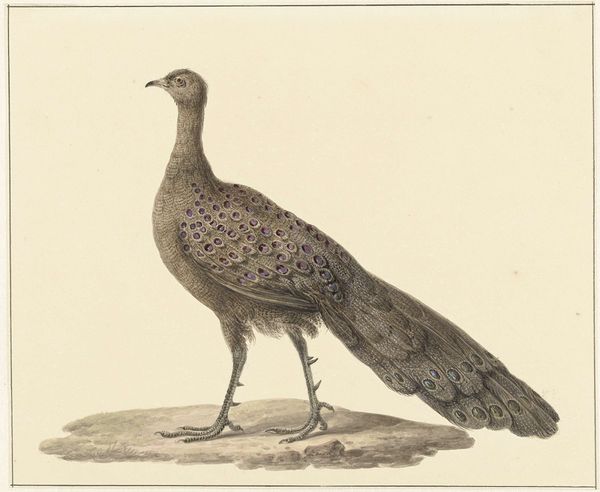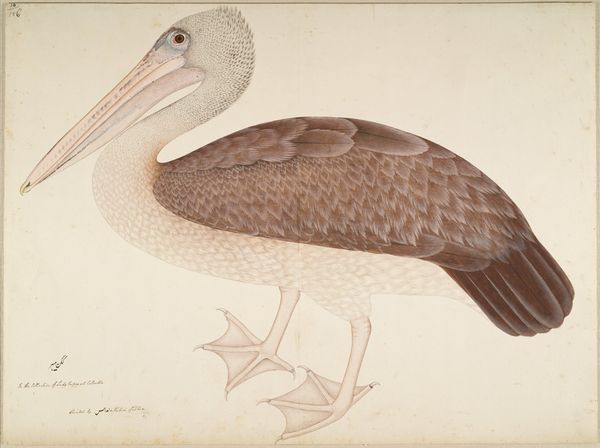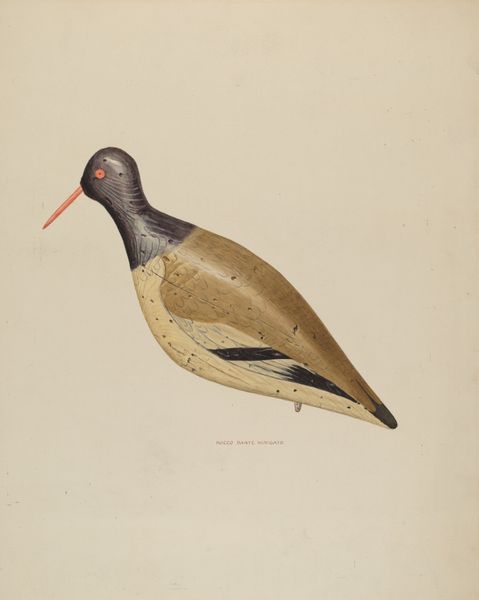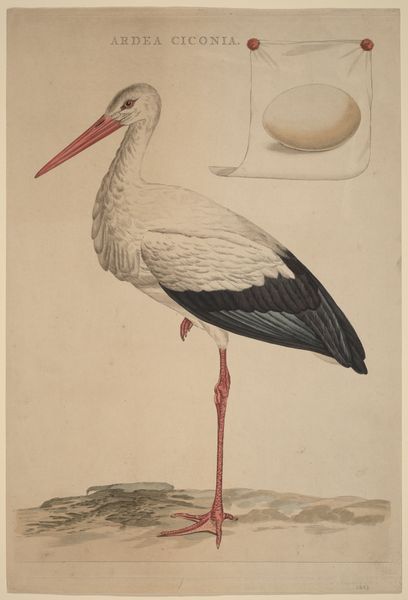
drawing, watercolor
#
drawing
#
landscape
#
watercolor
#
pencil drawing
#
genre-painting
#
watercolor
#
realism
Dimensions: height 360 mm, width 510 mm
Copyright: Rijks Museum: Open Domain
Curator: We're looking at a delicate watercolor drawing titled "Drake Pintail," created in 1682 by Rochus van Veen. What’s your first reaction to it? Editor: Elegant! The artist captured a remarkable serenity. I see in this poised figure symbols of purity, calm water... a contemplative state. Curator: The rendering is indeed exquisite, consider the control van Veen demonstrates in his use of line and the subtle gradations of tone that define the bird's form. See how light interacts with the feathers? It’s a masterful study in chiaroscuro. Editor: It’s impossible to separate technique from symbolism; the colors alone give so much context. Note how he isolates this image on stark white ground, making it the sole subject for our observation. The almost symmetrical shape suggests grace, perhaps, divinity? Curator: A fascinating point. Certainly, his careful delineation—the precision of line describing the beak and the individual barbs of the feathers—indicates scientific inquiry rather than pure symbolic representation. This feels almost like a specimen drawing. Editor: A fair observation, yet look to how throughout history, the graceful arc of a bird’s neck—particularly a waterfowl—has often been seen as embodying feminine grace and beauty, reflecting a certain symbolic meaning within a cultural lexicon. And that stark white—surely this suggests pristine purity, something untouched and ethereal? Curator: The emptiness of the ground does throw the focal point forward and creates contrast through pure negative space. While it could be read as purity, it equally highlights a kind of clinical removal. We're confronted with an object of study, stripped from its natural habitat. Editor: So, we’re looking at multiple readings simultaneously then. Between nature and artifice, science and symbolism, a pintail of the 17th Century contains surprising ambiguities. Curator: Indeed. A potent mix, especially from a Formalist point of view. Editor: The combination gives this drawing a transcending quality and the capacity to resonate across the ages.
Comments
rijksmuseum about 2 years ago
⋮
A Beverwijk native, Rochus van Veen drew almost exclusively plants and animals found in the Netherlands. He must have seen or perhaps even caught this pintail himself. He meticulously drew the typical greybrown plumage and the long, pointed tail, from which the duck gets its name. The carefully placed brushstrokes in the chest and back feathers are particularly well observed.
Join the conversation
Join millions of artists and users on Artera today and experience the ultimate creative platform.
